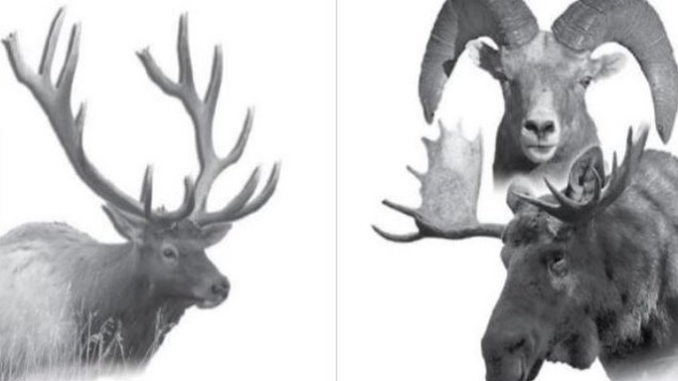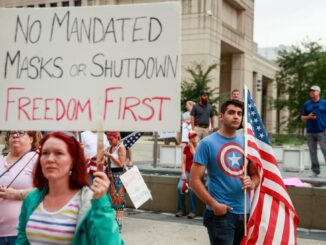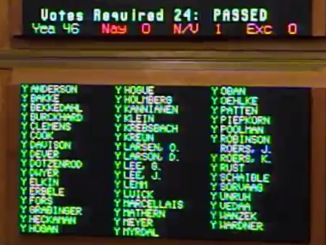
I’m going to take a few minutes to do something I almost never do here on The Minuteman. I’m not going to be political. I know, I know. The topic of this article doesn’t exactly fit the purpose of the blog, but please indulge me this one. It’s like an itch that needs scratching.
If you’re a big game hunter in North Dakota, perhaps you dream of it. If you’re one of the lucky ones, perhaps you now have a memory that will last you forever– whether good or bad. I’m speaking of drawing one of the coveted “Big Three” hunting licenses.
When we speak of the “Big Three” in North Dakota, we are speaking of elk, moose, and bighorn sheep. Three animals that are not typically thought of as being North Dakota big game animals– especially by out-of-staters. Nevertheless, they do indeed exist in numbers sufficient enough that the North Dakota Game & Fish Department issues once-in-a-lifetime licenses for them.
For the 2017 hunting season, Governor Doug Burgum signed a proclamation making the following licenses available:
Elk – 389
Moose – 247
Bighorn Sheep – 2 to 8 (To be determined on September 1, 2017 after surveys.)
As you can see, the chances of drawing one of the Big Three licenses are very low. This is especially the case when it comes to Bighorn Sheep. And therein lies the reason Big Three licenses are so coveted and highly prized– it borders on a miracle to draw one.
Like the deer licenses issued in this state, the Big Three are awarded through a lottery system. Except there’s one major difference. Applicants for one or more of the elusive Big Three licenses cannot
accumulate “preference points” through a “weighted lottery”. Meaning, if you fail to draw the license of your choice one year, you have a greater chance in successive years of drawing. Here’s a chart illustrating how the weighted lottery works with animals like deer, pronghorn, and turkey: 
With the Big Three not being “weighted” by allowing the accumulation of preference points, unsuccessful applicants don’t have their odds increased in successive years. This means that you’d have the same chance of drawing if you’re 70 years old as you would if you were 14 years old. Neither age nor number of years applying gives you any advantage over other applicants.
Many years ago, I helped a 14 year old young man fill his bull elk license. He drew his elk tag the first year he applied. We found him a nice 5×5 bull. The kid was phenomenal, made a well-placed shot, and was deserving of his quarry.
The interesting dynamic with this young man was that his father had been applying for the same bull elk license for many years, but had been unsuccessful. And he’s not alone. Many others in the state have applied for much of their lives and remain unsuccessful.
So, why not develop a system that increases the chances of drawing a Big Three license the older you get? Years ago, I came up with an idea that I will share here: Age Times Application Goes Into Lottery
14-19 = 1
20-29 = 3
30-39 = 5
40-49 = 7
50-54 = 65
55-59 = 126
60-64 = 217
65-69 = 344
70-74 = 513
75+ = 730
As you can see, this system has one simple modification in comparison to the one currently used for other game in North Dakota– years applying and the calculation is switched out for how old the applicant is. The number of times an application goes into the lottery remains the same and is based off of the existing system.
I am not going to pretend that this is a perfect answer. There certainly exists the possibility of suggestions for improvement. And I realize that some folks believe this is trying to fix a problem that does not exist. But the purpose behind it is that those folks getting more advanced in years have somewhat of a statistical advantage over others in finally drawing that elusive Big Three license.
I’m also realistic enough to realize that the likelihood of this idea ever coming to fruition is probably less than the odds of actually drawing a Big Three license. While the North Dakota Game & Fish Department does an admirable job managing North Dakota’s wildlife, they are certainly reluctant to changes such as this.
To all you big game enthusiasts out there, I wish you luck in the coming years in your efforts to become one of the “chosen ones” fortunate enough to chase one or more of the elusive Big Three in North Dakota. Should you have that opportunity, it’ll be an experience you won’t soon forget.
Sources:
1.
See governor’s 2017 proclamation here:





